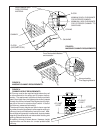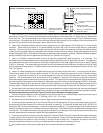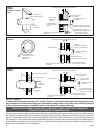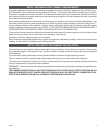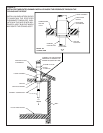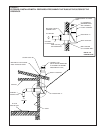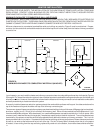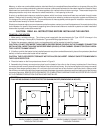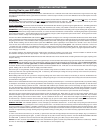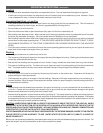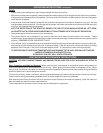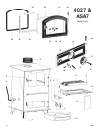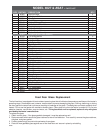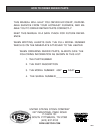
USSC 17
OPERATING INSTRUCTIONS continued...
Before opening the loading door, open the pipe damper and the ash door first.
Whenever a loading door is opened, it always should be cracked slightly to allow oxygen to enter and burn any combus-
tion gases that are present before fully opening. Failure to do this could result in sudden ignition of the unburned gases
when the door is opened.
A stove never should be filled with excessive coal so that the flue gas exit is blocked or impeded in any way. Burning
coal generates carbon monoxide. If the flue gas exit is blocked, the carbon monoxide can be forced out of the stove into
the room, with possible fatal consequences.
WITH THE EXCEPTION OF THE START-UP PERIOD, THE ASH PIT DOOR SHOULD NEVER BE LEFT OPEN.
ALSO NOTE THAT A STOVE SHOULD NEVER BE LEFT UNATTENDED WITH THE ASH PIT DOOR OPEN.
Serious damage to the stove can occur from overheating.
Coal stoves should not be installed in any chimney that has had a history of back-draft or flow reversal. These
conditions can cause improper draft resulting in carbon monoxide entering the house rather than being drawn up the
chimney. REMEMBER! COAL GASES ARE TOXIC!
Sulfur dioxide, sulfur trioxide and other ions released from coal burning may corrode stainless and masonry chimneys,
and even terra cotta chimney liners and brick in nearby buildings. Coal with high sulfur content will destroy chimneys
especially fast if soot sits in the flue for extended lengths of time. It is important to clean chimneys regularly.
•
•
•
•
•
•
Safety
PREVENTATIVE MAINTENANCE INSTRUCTIONS
CAUTION! BEFORE CLEANING CHIMNEY AND SMOKE PIPE BE SURE FIRE IS OUT AND INSIDE OF STOVE IS
COOL.
Soot - Formation and Need for Removal - When coal is burned, the products of combustion combinr with moisture to
form a soot residue, which accumulates on the flue lining. When ignited, this soot makes an extremely hot fire. When
burning coal, the chimney connector and chimney should be inspected at least once every two months during the heating
season to determine if a soot buildup has occured.
To clean the chimney, obtain a stiff brush with an extendable handle and insert the brush into the chimney from the top.
Continue the brushing and sweeping downward until the entire length of the chimney is cleaned.
After cleaning the chimney the debris will be at the bottom of the chimney at the clean-out opening. Open the clean-out
door and sweep the debris out into a metal container.
The smoke pipe from the stove to the chimney can be cleaned with a steel brush.
TO REDUSE RISK OF EXCESSIVE TEMPERATURES AND DAMAGE TO THE UNIT, USE ONLY NUT SIZE (OR
LARGER) BITUMINOUS OR ANTHRICITE COAL
STORE COAL IN A DRY, WELL VENTILATED AREA.



